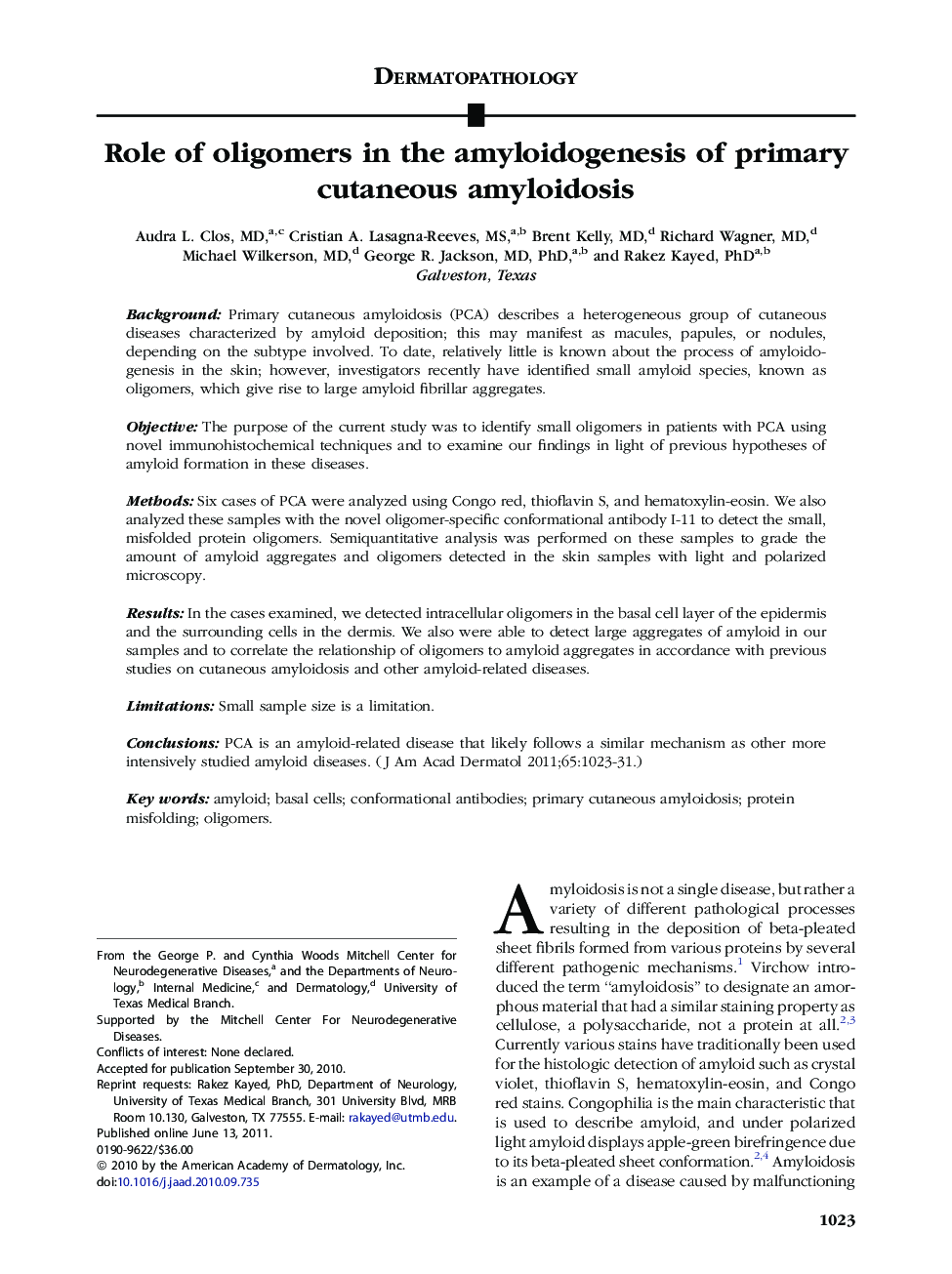| Article ID | Journal | Published Year | Pages | File Type |
|---|---|---|---|---|
| 3207205 | Journal of the American Academy of Dermatology | 2011 | 9 Pages |
BackgroundPrimary cutaneous amyloidosis (PCA) describes a heterogeneous group of cutaneous diseases characterized by amyloid deposition; this may manifest as macules, papules, or nodules, depending on the subtype involved. To date, relatively little is known about the process of amyloidogenesis in the skin; however, investigators recently have identified small amyloid species, known as oligomers, which give rise to large amyloid fibrillar aggregates.ObjectiveThe purpose of the current study was to identify small oligomers in patients with PCA using novel immunohistochemical techniques and to examine our findings in light of previous hypotheses of amyloid formation in these diseases.MethodsSix cases of PCA were analyzed using Congo red, thioflavin S, and hematoxylin-eosin. We also analyzed these samples with the novel oligomer-specific conformational antibody I-11 to detect the small, misfolded protein oligomers. Semiquantitative analysis was performed on these samples to grade the amount of amyloid aggregates and oligomers detected in the skin samples with light and polarized microscopy.ResultsIn the cases examined, we detected intracellular oligomers in the basal cell layer of the epidermis and the surrounding cells in the dermis. We also were able to detect large aggregates of amyloid in our samples and to correlate the relationship of oligomers to amyloid aggregates in accordance with previous studies on cutaneous amyloidosis and other amyloid-related diseases.LimitationsSmall sample size is a limitation.ConclusionsPCA is an amyloid-related disease that likely follows a similar mechanism as other more intensively studied amyloid diseases.
